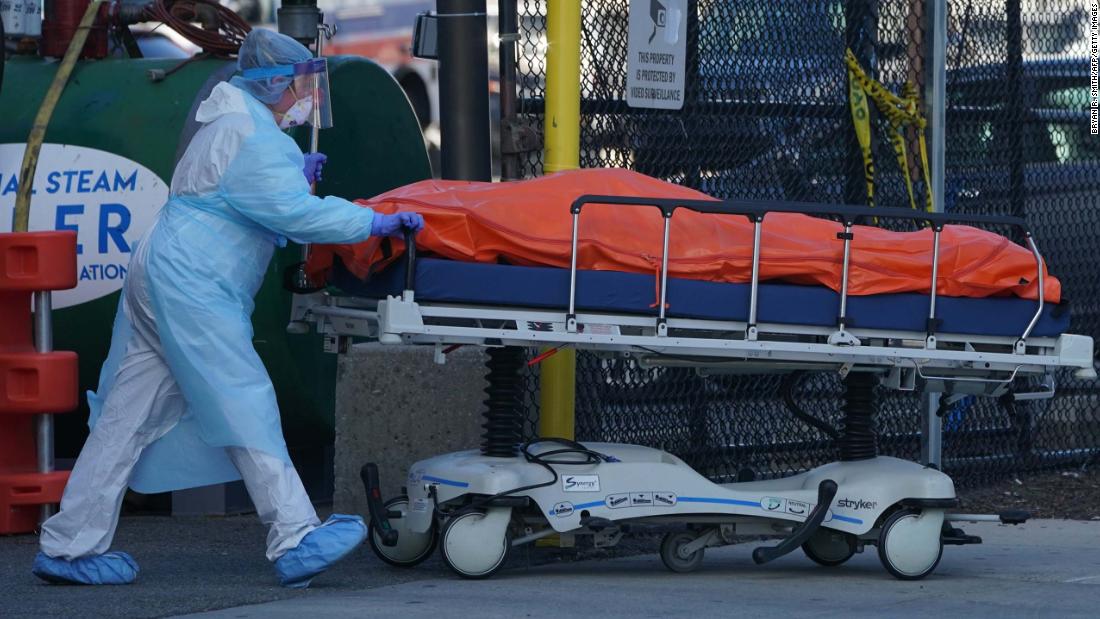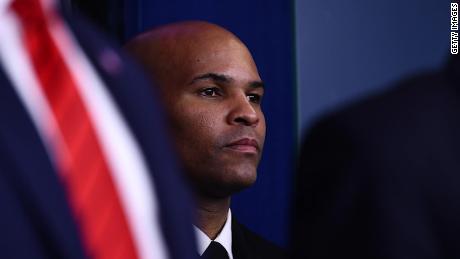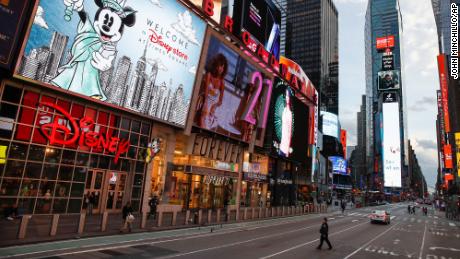|
Our Tribe!
|

An internist who helps screen coronavirus patients at the University of Chicago Medical Center’s emergency room, Peek knows what’s at stake.
“Honey, you need to be wearing a mask,” she told the woman at the checkout counter. “She said, ‘Really?’ It was kind of sad — like, I know it but I don’t have one.”
The clerks, like Peek, are African American. They were checking and bagging, stocking aisles and mopping the market floor in the predominantly black Bronzeville neighborhood. They worked while so many others stayed safe at home.
“I have two (masks) in my car,” the doctor told the cashier. “I’ll go get you one. I brought her back a mask and gloves… I wanted to cry.”
The recollection upset Peek. She paused.
“In the emergency room there was a guy who was a security guard begging me for an N95 mask,” said Peek, whose hospital is in Hyde Park, also on the South Side.
“He asked if I’d give him an extra one. He was being screened for the coronavirus. He didn’t have a mask and was exposed to people in the community. Another lady I saw tested positive. We sent her home for isolation but there are six other people living in her home.”
Peek only hopes the store clerks don’t wind up in her emergency room.

Why black Americans are at higher risk for coronavirus
Chicago, New York and other major cities are struggling with racial disparities in coronavirus cases, with the pandemic exposing deep-seated economic inequalities that make it disproportionally hurt blacks and Latinos.
“What pandemics, natural disasters, economic disasters do is uncover the everyday lived experience of these structural inequities that communities live with all the time,” Peek said. “Then they get so horrid that they come to light and people are just clutching their pearls like, ‘Oh my goodness!'”
A never-ending plague of economic uncertainty, despair and neglect
In Chicago, officials said this week that 72% of deaths from the virus have occurred among blacks, who make up about 30% of the city’s population. “Those numbers take your breath away,” said Chicago Mayor Lori Lightfoot, who launched a public health campaign aimed at minority communities.
Louisiana Gov. John Bel Edwards said more than 70 percent of the state’s 702 coronavirus deaths were African American patients, who make up just 32 percent of the state’s population.
Coronavirus hitting some African American communities extremely hard
Economic and social inequalities and differences in health care access have also surfaced in early data on virus deaths in New Jersey and in Michigan, where African Americans account for more than 40% of Covid-19 deaths though they make up 14% of the population.
“This hits home for people. I’ve lost 15 people in my life to this virus here in the city of Detroit,” said Lt. Gov. Garlin Gilchrist II, who’s heading a task force to look into why the virus has hit his African American community so much harder.
In New York City, Hispanic coronavirus victims account for 34% of all fatalities while comprising 29% of the population of more than eight million people, according to the city. Black residents account for 28% of the city’s deaths, while making up 22% of the population.
“Why are more African Americans and Latinos affected?” New York Gov. Andrew Cuomo asked this week, vowing to increase testing and research in black and Latino communities.
“We’re seeing this around the country. Comorbidity, I understand that, but I think there’s something more to it. You know, it always seems that the poorest people pay the highest price. Why is that? Whatever the situation is.”
The disparities were reminiscent of the scourge of Hurricane Katrina on black Americans 15 years ago, Cuomo said.
The Category 3 storm, with winds near 127 mph and severe flooding, directly or indirectly led to 1,577 deaths in Louisiana in a disaster that opened a window into persistent racial and economic inequities.
“The people standing on those rooftops were not rich white people,” the governor said.
President Donald Trump recognized the inequalities at a White House’s coronavirus news briefing on Tuesday.
“We’re actively engaging on the problem of increased impacts — this is a real problem and it’s showing up very strongly in our data — on the African-American community,” Trump said.
For many in black America, however, everyday is a little Katrina, regardless of the coronavirus — a never-ending plague of economic uncertainty, despair and neglect.
‘African Americans are at the back of the list’
African Americans are less likely to be insured and able to afford testing. They are more likely to work in unstable jobs and suffer from existing medical conditions such as asthma, diabetes, hypertension and heart disease — leaving them at a higher risk for Covid-19.
And then throw in well-documented disparities in income, home ownership, employment, wealth, education, incarceration and infant mortality. They are more likely to live in urban counties — where higher density lets the virus spread faster — than suburban or rural ones, according to a Pew analysis.
Black and Latino workers are less likely to be able to work from home. Only 20% of black and 16% of Latino workers reported being able to do their jobs from home, compared with nearly 30% of white employees, according to the Economic Policy Institute.
In Chicago, black non-Latino people were more likely to be infected with coronavirus and to die of it. They made up 52% of all coronavirus cases in the city and, adjusted for population, this group was more than twice as likely to be infected as white non-Latino people.
“All of these different things that we look at as Americans and say this is what we aspire — in each of those categories Africans Americans are at the back of the list,” said Dr. Abdullah Pratt, who practices at the University of Chicago Medical Center emergency room. “Those things all make for a perfect storm … when you have a virus like Covid.”
A whole class of people long neglected are now deemed essential

An MTA worker wears a surgical mask at the Grand Army Plaza station in Brooklyn.
Many are lower-income food service employees. And they are essential. Restaurant workers and delivery drivers. Police and corrections officers. Subway workers, bus drivers and health care employees.
A tragic irony of the pandemic is a whole class of people long neglected by society are suddenly deemed essential in a national health crisis.
In New York City, the virus is killing blacks and Latinos at twice the rate as white people.
At least 50 transit workers have died from coronavirus in recent weeks and more than 7,000 have either tested positive for the virus or have self-quarantined, according to Metropolitan Transportation Authority Chairman and CEO Pat Foye, who himself has tested positive. The 71,000 employee agency runs the subways, buses and commuter rail lines.

America’s public transit systems are going to need a bailout, too
At least 22 of the deaths involved New York City Transit, the 51,000-worker agency that operates the subways and city bus lines, according to Transport Workers Union Local 100. At least 15 deaths involved black or Latino workers. The agency’s workforce is 46% black and 17% Hispanic.
Catherine Francois, 55, an African American subway cleaner, said that in early March, long before the agency began distributing masks, gloves and sanitizer to employees, she started wearing a protective suit, gloves and a mask she purchased online.
“I wasn’t going to sit and wait for somebody to save my life,” said Francois. “I work in a train station.”
Francois said she is susceptible to bronchial infections. She has high blood pressure. She said her brother, who was also a transit worker, died from the virus on Monday.

Echoes of 9/11, as New Yorkers ‘try to keep calm but we can’t quite carry on’
“I can’t afford to get sick,” the Brooklyn resident said. “For a long time I was the only cleaner walking around with a suit on. Too many of our coworkers are dying every day.”
Every night at 7, during the pandemic, New Yorkers — taking a page from similar gestures in Italy and Spain –go to their windows to clap, cheer and bang pots with spoons in appreciation of health care workers.
At the towering Riverside Park Community apartment complex in West Harlem, residents have been cheering and applauding city bus operators at the Manhattanville Bus Depot across the street.
Bus operator Kenneth Perez captured the moment on cellphone video while leaving work recently.
“It was unbelievable,” he said, according to a Facebook post by his union. “Tears were coming out of my eyes. You know, the police get thanked. Firemen get thanked. And we’re always out there. There’s never a thank you for us. So this was special, very special.”
‘How many Katrinas? How many coronavirus pandemics?’
It wasn’t until mid March that officials around the country began issuing stay-at-home directives in a bid to halt the spread of the virus. The initial public health response prioritized testing for people who had traveled overseas.
“The majority of my friends have never been to the international terminal at O’Hare,” Pratt said. “At the end of the day we didn’t bring this virus into our communities but we’re the laborers at O’Hare, at the train stations.”
After his shift the other night, Pratt recalled treating two black Chicago Transit Authority workers with “horrible Covid.”
“They were going to work, doing an essential job,” he said. “Now they’re on life support in their middle age.”
Minutes from downtown Chicago, Cook County’s chief medical examiner is preparing a refrigerated warehouse to potentially store more than 2,000 bodies during the pandemic.
Nydra Sutton, chief embalmer at Leak & Sons Funeral Home, one of the oldest on the South Side, said the funeral home was near its 100-body storage capacity, including about 20 Covid-19 cases. It serves the city’s black community and is owned and staffed by African Americans.
“We’re exhausted,” she said. “The cases are coming in rapidly… We’re trying to figure out how to handle the surge. We need to make sure our workers are safe. There’s a lot we don’t know about this virus.”
Sutton said she was surprised at the number of people still congregating on the streets of the South Side despite the city’s stay-at-home order.
“I’ve been seeing the younger crowd,” she said. “Some people don’t believe this is something they can catch. They say that’s for old people.”
At the White House coronavirus press briefing, US Surgeon General Jerome Adams on Friday talked about chronic conditions such as asthma and high blood pressure that disproportionally afflict minority communities. He showed his own inhaler. He has carried one for decades “out of fear of having a fatal asthma attack,” he said.
Adams stressed the importance of social distancing guidelines in place around the country, noting that black Americans are more likely to live in densely packed areas and in multigenerational housing. He vowed the administration will take steps to ensure “everybody has an equal chance to be healthy.”
Said Peek, “It’s unclear how many disasters have to happen before we as a nation are willing to see what has been consistently in front of us. How many Katrinas? How many coronavirus pandemics? How many natural disasters before we realize the structural inequities that exist in our country, that continue to take the lives of the most vulnerable among us.”
